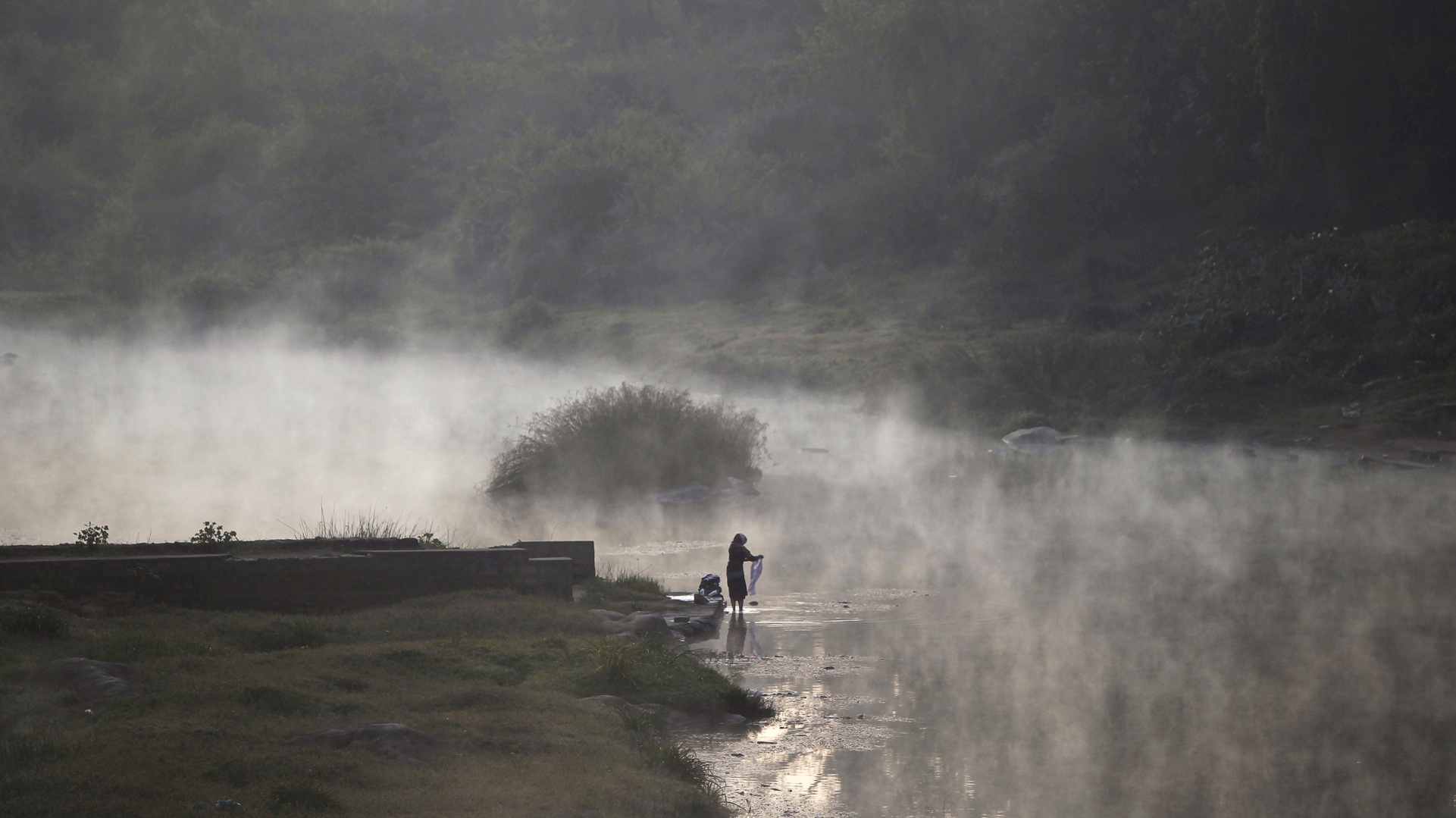THE CAUVERY river originates in the Brahmagiri Hills of the Western Ghats, Karnataka; the spring that marks its site of emergence is known as the Talakaveri. From here, the river makes its way through Karnataka and enters Tamil Nadu through the Mettur reservoir. The Cauvery’s historical association with cropping practices in Tamil Nadu was centered on its identity as a harbinger of floods in the delta, with the Kallanai or Grand Anicut dam constructed under the Chola Dynasty in the 2nd century CE serving the purpose of both irrigation and flood control. In terms of rainfall, the Cauvery receives both the South West and North East monsoons. The South West monsoon, which begins in June and extends to September, is responsible for the cultivation of the Kuruvai crop. However, the distribution of this seasonal rainfall by the river is far from uniform across the delta. While the Eastern parts receive the North East monsoon in October, its spread and predictability remain areas of substantial concern, with the season, more generally, being associated with such extreme weather features as storms and cyclones. For the individuals engaged in agricultural activities, these sub-regional monsoonal disparities do not constitute new learnings.
The distribution of this seasonal rainfall by the Cauvery is far from uniform across the delta.
The Cauvery is a seasonal river with temporary water flows that may last six months in some parts. The delta, at other times, remains dry. Cropping practices in the delta too, have been significantly affected for some years now, resulting in a shift from a three-crop cycle to a two- or even one-crop cycle across a number of agricultural holdings. Broad Issues The socio-economic and cultural significance of the river is interwoven with its perceived identity, albeit less so in recent decades, as a river that would flood its banks. Historically, the fertility of the delta, owing to its distinctive soil constitution of alluvial clay and sand in nearly 80 percent of the region, coupled with accounts of King Karikala Chola, contributed to the delta’s identity as a ‘rice bowl’. Importantly, cropping practices in Tamil Nadu show themselves to be historically distinct from Karnataka’s in this key respect; owing to the nature of the soil in the latter, the cultivation of dry crops was previously the norm, quite unlike the former. [imgcenter]
The history of the Cauvery in Tamil Nadu is a conjunctive history of paddy cultivation.
However, human interference continues to be held responsible for the failure of the upper riparian areas to realise optimum flows in recent years. An increasing dependence on borewells has exacerbated problems of water shortage in the region, owing to depleted groundwater levels with a growing incidence of issues of water salinity. Further, the consequences of practices introduced under the aegis of the Green Revolution continue to impair the agricultural situation, owing not only to the specific requirements of irrigation and chemical fertilisers, but also due to its erasure of alternate water storage mechanisms in the region such as small tanks that could otherwise have been used around the year. Moreover, significant variations in productivity at present, have been linked to some key factors; Ranganathan mentioned that ‘global warming’, and ‘inter-state water disputes’ had an important part to play. Particularly as concerned paddy cultivation, individuals in the Thanjavur and Thiruvarur districts noted that the agricultural output of Kuruvai and Thalady crops had decreased significantly. While the level of mechanisation in agriculture has been increasing over the years, farmers who could afford to make these changes, said that the compatibility of machines with the composition of soil in the region was a recurring concern. They also mentioned two additional issues, namely, (i) the lack of skills to operate machinery, and (ii) a lack of efficient machinery for the fulfilment of specific farming needs like weeding. [imgcenter]
One of the many ways in which people interact with the river in this region is through practices of ritualism.
In this context, one of the many ways in which persons interact with the river in this region is through practices of ritualism; the Cauvery has long occupied sacred status among farmers who not only worship the river but also mark the commencement of the monsoon through the Aadi Perukku festival. However, as some noted, cross-decadal distress might also necessitate changes in patterns of ritualism, where Muthusamy for instance, said, “Since, it is water that we worship, we should start praying to our submersible pump sets and taps instead of the river.” This reflects a wider view in the region that speaks to a reduced dependence on the river, and a proportionally increased dependence on borewell based irrigation. But even this alternative has proven to be deeply problematic, with water having turned into a source of considerable anxiety for many. [imgcenter]
The wider challenge in the delta is also one of finding ways around dissonant weather patterns.
While surplus conditions in the Mettur dam at present might be a source of hope and relief for a region that has been riddled with water scarcity for some years, the question of what the July and August rains can do for the Cauvery and its people might involve locating water in a longer temporal context; of addressing the dimension of resource mismanagement and identifying that the issue of uncertain flows may not, as yet be resolved. Here, the additional fact of the linguistic reorganisation of states, with its lack of a physical geographical basis also draws attention to the consequences of superimposing practices of (b)ordering on natural formations, as some individuals mentioned. Given this context, the idea of the Anthropocene might well call forth new understandings of environmental coherence through renewed approaches to cropping practices in the delta. But the idea of engaging with these can and must be about firstly, working toward including marginalised knowledges and experiences into our descriptions of environments, and secondly, of acknowledging that nature in its varied representations today, is an evolving project of imagining futures and the human place in it. — Images courtesy Reuters, Wikimedia Commons *** Note from the writer: I am grateful to Dr J Jeyaranjan for his advice and guidance. This article is based on a field visit to Thanjavur and Thiruvarur conducted in May 2018. *Names that have been changed to protect the privacy of respondents in this study are marked. The author is a doctoral student in the Department of Geography, King’s College London


)
)
)
)
)
)
)
)
)



